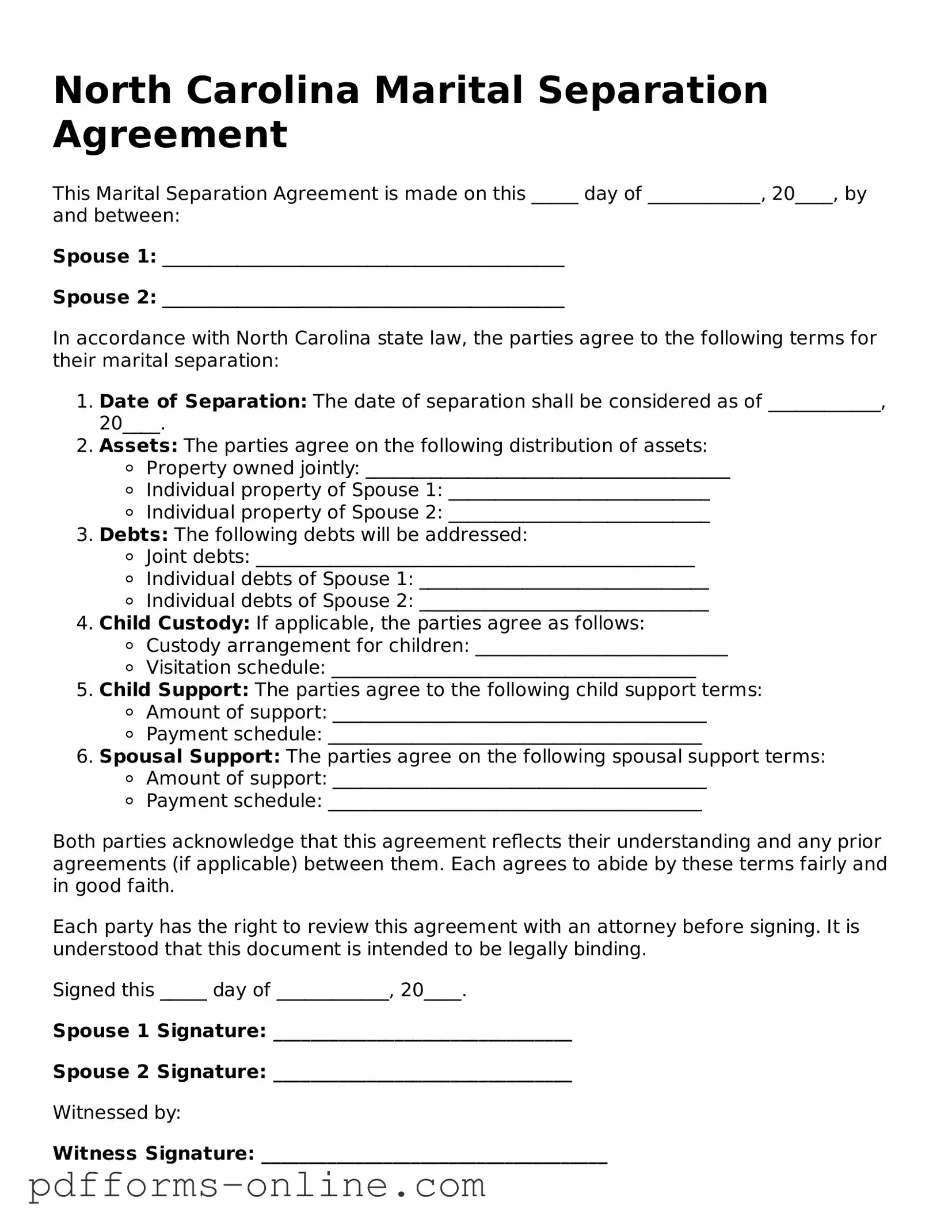The North Carolina Marital Separation Agreement is similar to the Divorce Agreement, which outlines the terms of a divorce. Both documents address issues such as property division, child custody, and support obligations. However, while a Divorce Agreement is finalized after a divorce is granted, a Marital Separation Agreement is often used when a couple decides to live apart but may not yet be ready to divorce. This document can serve as a temporary arrangement until the divorce is finalized.
Another document that shares similarities is the Separation Agreement. Like the Marital Separation Agreement, a Separation Agreement details the rights and responsibilities of each spouse during the period of separation. It can cover similar topics, including financial support and child arrangements. The key difference lies in the terminology; the term "separation" can be used in various contexts, while the Marital Separation Agreement specifically pertains to North Carolina law.
To facilitate a smoother transition during separation, the guide to creating a Marital Separation Agreement outlines its significance and importance in helping couples manage their circumstances wisely. You can find more information on this vital document at the Florida Marital Separation Agreement form details.
The Child Custody Agreement is also comparable. This document focuses solely on the custody and visitation arrangements for children. In a Marital Separation Agreement, child custody provisions may be included, but the Child Custody Agreement is a more specialized document that can be used independently. Both agreements aim to ensure the best interests of the child are prioritized, but they serve different legal purposes.
Similarly, a Property Settlement Agreement is relevant. This document specifically addresses the division of marital assets and debts. In a Marital Separation Agreement, property division may be included as part of the overall terms of separation. However, a Property Settlement Agreement is often used when couples are finalizing the distribution of their assets, either during separation or as part of a divorce.
The Alimony Agreement is another document that bears resemblance. It specifically outlines the terms of spousal support, including the amount and duration of payments. While the Marital Separation Agreement may include alimony provisions, an Alimony Agreement focuses exclusively on financial support between spouses. This separation allows for clearer terms and conditions regarding financial obligations.
A Non-Marital Cohabitation Agreement also shares some characteristics. This document is used by couples who live together but are not married. It addresses similar issues, such as property rights and financial responsibilities. While the Marital Separation Agreement pertains to legally married couples, both documents aim to clarify the rights and obligations of partners in a domestic arrangement.
The Prenuptial Agreement, although created before marriage, also has similarities. This document outlines how assets will be handled in the event of a divorce or separation. Like the Marital Separation Agreement, it addresses property division and financial matters. However, the Prenuptial Agreement is established before marriage, while the Marital Separation Agreement is created during or after a marriage has begun.
The Postnuptial Agreement is closely related as well. This document is similar to a Prenuptial Agreement but is signed after the marriage has taken place. It can address property division and financial responsibilities, much like the Marital Separation Agreement. Both agreements aim to clarify expectations and reduce conflict in the event of separation or divorce.
Lastly, the Custody Modification Agreement is relevant. This document is used when existing custody arrangements need to be changed. While the Marital Separation Agreement may set initial custody terms, a Custody Modification Agreement allows for adjustments as circumstances change. Both agreements prioritize the welfare of the child, but they serve different purposes in the legal process.
